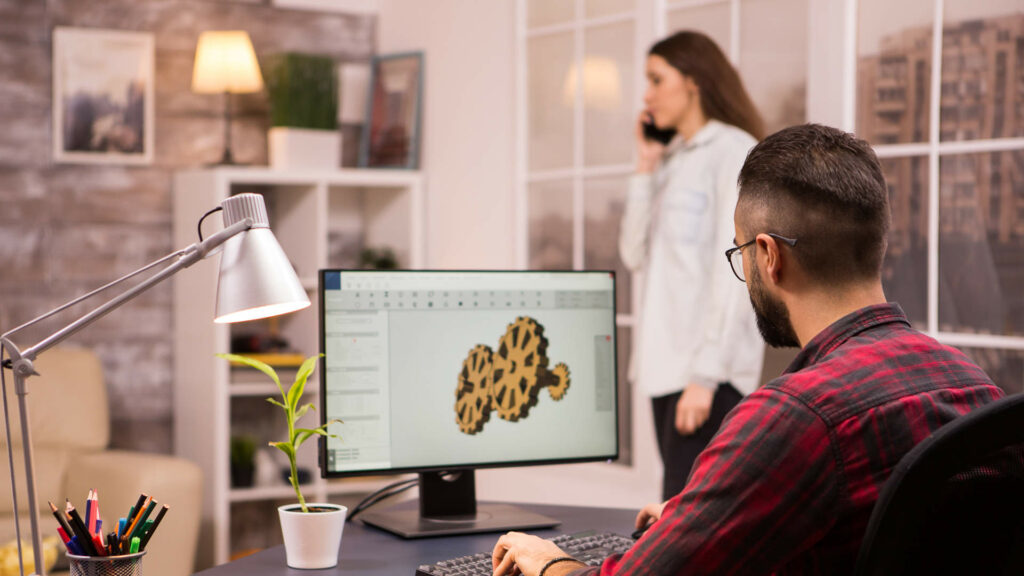In the ever-evolving world of Computer-Aided Design (CAD), Australia stands tall as a global leader, transforming industries with cutting-edge innovations. From architecture to engineering and product design, CAD tools are revolutionising the way professionals create, collaborate, and deliver.
Curious about what’s making waves in 2025? Let’s explore the top CAD trends you can’t afford to miss.

1. AI-Powered CAD Tools: The Future Is Now
Artificial Intelligence is reshaping CAD workflows across Australia. Designers are now leveraging AI to:
- Automate repetitive tasks, saving hours of work.
- Enhance precision with predictive algorithms.
- Generate smarter design iterations for better outcomes.
By combining efficiency with creativity, AI is empowering Australian professionals to innovate like never before.
2. Sustainability First: Designing for a Better Tomorrow
Eco-consciousness is no longer optional—it’s essential. CAD is driving the push for sustainable designs in Australia by:
- Simulating energy-efficient structures.
- Reducing material waste with optimised workflows.
- Integrating renewable energy solutions into designs.
With CAD tools, designers are making bold strides toward achieving Australia’s ambitious net-zero goals.
3. Cloud Collaboration: CAD Without Limits
In today’s connected world, cloud-based CAD platforms are a game changer. They allow teams to:
- Collaborate in real-time, even across borders.
- Share feedback instantly for quicker revisions.
- Access projects securely from anywhere.
Cloud collaboration is breaking barriers, ensuring Australian firms deliver faster, smarter, and more innovative designs.
4. 3D Printing Meets CAD: Rapid Prototyping Revolution
CAD’s integration with 3D printing is transforming manufacturing in Australia. It’s enabling industries to:
- Develop prototypes with unmatched speed and accuracy.
- Customise components for niche needs.
- Minimise production waste and reduce costs.
From healthcare to construction, this duo is setting new standards for innovation.
5. Immersive Experiences: Virtual and Augmented Reality
Imagine walking through a virtual building before laying a single brick. That’s the power of CAD combined with AR and VR. In Australia, these technologies are being used to:
- Create interactive design presentations.
- Enhance client decision-making with lifelike simulations.
- Reduce errors by visualising designs in real-time environments.
The result? Happier clients and flawless execution.
6. Parametric Design: Unlimited Possibilities
Parametric design tools are redefining creativity and efficiency. Australian designers are using them to:
- Create customisable, adaptive designs with ease.
- Adjust projects quickly without starting from scratch.
- Balance creativity with cost-effectiveness.
Whether it’s urban planning or manufacturing, parametric design ensures every solution is tailor-made.
7. Specialised CAD Tools for Australia’s Unique Industries
Australia’s diverse economy demands customised CAD solutions. Some examples include:
- Mining: Simulating equipment and optimising operations for harsh conditions.
- Marine: Designing efficient and sustainable vessels.
- Healthcare: Crafting prosthetics and medical devices with precision.
These tailored tools are helping businesses achieve outstanding results.
8. Upskilling to Stay Competitive
These tailored tools are helping businesses achieve outstanding results.
- Offering training programs for professionals.
- Collaborating on research and development.
- Equipping designers with the latest tools and techniques.
By investing in upskilling, Australia ensures its workforce remains globally competitive.
9. BIM and CAD Integration: The Construction Revolution
Building Information Modeling (BIM) is redefining the construction landscape in Australia. When combined with CAD, it offers:
- Streamlined workflows that reduce delays.
- Improved accuracy in large-scale projects.
- Seamless collaboration between stakeholders.
This dynamic duo is taking Australian construction to the next level.
10. Customisation is King
In an era of personalisation, CAD tools empower Australian businesses to:
- Deliver bespoke designs that stand out.
- Cater to specific client needs with precision.
- Strengthen their market position with innovative solutions.
From furniture design to tech devices, customisation is driving client satisfaction and business success.
Conclusion: Embrace the Future of CAD in Australia
As CAD continues to evolve, Australia remains at the forefront of this transformation. By embracing trends like AI, sustainability, and VR, the country is not just keeping up—it’s setting the pace for global innovation.
Whether you are an industry veteran or a budding designer, now is the perfect time to harness these trends and make your mark in the CAD revolution.
What’s Your Favorite Trend?
We’d love to hear from you! Drop a comment below and share your thoughts on the trends shaping Australia’s CAD landscape.


